Knee Popping and Pain
Knee popping, often accompanied by pain, is a common concern that many individuals experience at some point in their lives. The knee is a complex joint, consisting of bones, ligaments, tendons, and cartilage, and its proper functioning is crucial for maintaining mobility and stability.
On the other hand, knee popping and pain may also occur, and these symptoms could indicate a meniscal rupture, ligament damage, or issues with patellar tracking.
Introduction
Generally innocuous, knee popping, snapping, cracking, or crunching sounds could result from aging joints. However, they might also be a warning sign of a major meniscus injury or a precursor to knee arthritis. This is particularly true if there are other sounds present as well.
discomfort or a reduction in joint motion.
Many people report hearing odd noises, like clicking their knees, when they squat or stand up from a kneeling position. It is usually more of an annoyance than a serious issue, but occasionally it might be an indication of a knee issue.
The grating noises or sensations caused by friction between cartilage and bone are referred to as crepitus. Although it is the knee, it can affect other regions of the body. Generally, knee-popping noises are not an issue. However, occasionally, if you get soreness along When there is cracking, osteoarthritis or another kind of arthritis may be present.
Popping and discomfort in the knees are frequent issues. It’s the distinct snap, crackle, pop sound that makes your knees sound like a rice krispie bowl. Plucking your knee is a relatively common occurrence. It could just be tiny gas bubbles popping in the knee, or it could be a sign of a soft tissue condition like a torn ligament.
The Knee Popping Sound: What’s Up?
Your knee popping could be caused by many problems, such as:
- Synovial Fluid: All of your body’s joints are covered in a membrane called synovial fluid, which facilitates easy movement and use. But occasionally, bubbles might build up and burst, producing a popping or snapping noise. This may happen as the cartilage and bone grind together.
- Cartilage: As we age, our cartilage may progressively deteriorate in different places. A popping or cracking sound is produced when the worn cartilage rubs against the bone or ligaments during movement.
- Knee Structure: You may hear and feel popping when the patella, or kneecap, is out of alignment with the other bones. Damage to this region, which includes the kneecap, is often accompanied by edema and pain.
Reasons when knees pop:
When knee popping isn’t followed by discomfort or swelling, it’s usually safe.
The knee’s structure tends to cause sensation to occur. The knee consists of a trio of bones:
- The tibia, which is a shinbone
- The patella, which is the kneecap
- The femur, a bone in the thigh
The trochlea, a bend in the thighbone, is where the kneecap rests. The kneecap travels forward and backward inside the trochlea as the knee bends or straightens. the soft tissue that provides defense. When knee popping is accompanied by discomfort, edema, or both, this could mean damage to the bone or soft tissue surrounding the knee, often known as pathological.
Symptoms & Signs of Crepitus
Crepitus, or joint noises and bone cracking, is a common side effect of popping joints, particularly in older people.
You might observe:
- When you bend your knee, you hear noises like your knee snapping or cracking.
- popping or shattering when your joint is bent.
- Crunching noises are made in your knee when you kneel or climb stairs.
- You may feel a crushing sensation or hear crackling or grinding sounds when you move your joint.
- Periodic or persistent edema surrounding the joint.
- Abrupt, intense pain: Pain that limits the knee joint’s usual range of motion may manifest.
- Weakness and instability in the knee: It’s conceivable that the injured knee won’t allow you to bear weight.
- Swelling and bruises.
Causes of Knee Popping and Pain
Though the severity of the injury can vary, it’s generally reasonable to believe that anything is amiss if your knee makes a quick, audible popping sound. These are the reasons.
Some of the potential causes of knee popping pain include;
- Air Bubbles: Knee popping affects both younger and elderly individuals and is mostly innocuous. In some situations, the sound can come from tiny bubbles formed by air seeping into the lubricating fluid, known as synovial fluid. There may be a popping or cracking sound when the bubbles break when the knee is bent or stretched. Nevertheless, the illness is thought to be innocuous and doesn’t cause any pain.
- Torn meniscus: If someone suddenly turns their knee or bends their knee significantly, they run the risk of tearing their meniscus. The cartilage that is positioned between your thighbone and shinbone may rupture if there is an abrupt twist, rotation, or application of force. This type of injury, called a meniscus tear, may produce a popping sound. There may be pain, edema, stiffness in the joints, and a feeling of unsteadiness thereafter. If your knee joint is blocked by loose cartilage, you can also experience an unusual slipping feeling.
- The injury: The injury may result in catching or popping sound when moving, soreness, stiffness, swelling, or the inability to fully extend the range of motion in the knee.
- Cartilage injury: In addition to causing edema, restricted range of motion, and popping sounds when the knee moves, damaged cartilage can also lead to inflammation.
- Patellar tendon tear: The patellar tendon connects the shinbone to the upper part of the kneecap. A depression at the bottom of the kneecap that is difficult to straighten, soreness, bruising, and a popping sound can all be signs of a torn patellar tendon.
- A torn anterior cruciate ligament (ACL): The most common type of knee injury is an ACL tear, which pops loudly and usually results in excruciating agony and the inability to stand on the injured leg.
- Lateral collateral ligament (LCL) sprain: A popping sound, discomfort, stiffness, and weakness could be symptoms of this injury.
- Torn medial collateral ligament (MCL): In addition to causing quite a bit of discomfort and swelling, a tear in the medial collateral ligament (MCL) in your knee can also make an audible popping sound. Whether you actually rip it or just stretch it will determine how painful it is. Later on, you can experience some stiffness and edema, and you might not be able to bend or straighten your knee.
- Posterior cruciate ligament (PCL) injury: A PCL injury can cause pain, swelling, and sometimes a popping sound. Your posterior cruciate ligament (PCL), which is located at the rear of your knee joint, can also be injured, though it happens less frequently than your ACL. Additionally, it is less likely to cause the same loud cracking sound at the time of injury as an ACL tear. You’re going probably experience some edema and pain.
- Patellar tracking impairments: Patients with patellar femoral syndrome are typically diagnosed when the patella does not track properly or move up and down in the joint. When bending or straightening the leg, people frequently feel as though their patella is grinding, popping, or catching.
- Knee arthritis: Osteoarthritis, another name for knee arthritis, is a condition caused by a breakdown of the cartilage that separates the bones in the knee joint. Popping sounds can occur when your bones grind or grate against one another while you move.
- Runners Knee: Runners Knee, also known as anterior knee pain or patellofemoral pain, is a condition where the kneecap moves incorrectly, resulting in an unclear sensation around the knee. When a person has a runner’s knee, their patella scrapes against their femur, frequently resulting in a popping sound or grinding sensation while the knee moves. Usually, symptoms worsen after extended periods of inactivity (such as office workers) or after extensive physical exertion (such as running or coming downstairs). With runner’s knee, knee discomfort and popping seem to occur sometimes rather than constantly.
Knee Popping By Activity:
Knee Popping When Extending: Plica syndrome, patellofemoral pain syndrome, or gas bubbles—which are typically not painful—are the main causes of knee popping when you straighten your knee.
Knee Popping and Pain When Bending: When you squat down or experience knee popping and agony when bending your knee, it’s most likely the result of a meniscus tear or other condition known as chondromalacia patella.
Knee Popping When Extending And Bending: If you have popping and pain in both knee
flexion and extension, knee arthritis or joint surface injury is most likely present. It’s probably just gas bubbles popping if there’s no discomfort.
Knee Popping With Twisting: An ACL tear or other knee ligament injury is typically the cause of sudden knee pain and popping when you twist. Seek medical assistance right once if you twist and the knee becomes unstable.
Knee Popping When Walking: Nearly every potential reason for knee popping that we’ve examined here, such as arthritis and runners’ ligament injuries, can result in knee pain and popping as you walk. Usually, this will be accompanied by additional symptoms that provide a clearer diagnosis of knee discomfort.
Knee Popping No Pain: If your knee pops without causing any discomfort, it’s most likely just a harmless case of gas bubbles popping inside the joint. Maintaining knee muscular strength can occasionally aid in lessening the incidence of knee popping.
Is a Knee Pop really a serious issue?
You should be able to determine the extent of your injury based on your level of pain and how limited your movement is. Nonetheless, it can be assessed in more detail using the information below.
- Not serious: It is possible for an air bubble to occasionally grow inside the knee joint. The bubble eventually bursts, which is a safe, painless sensation similar to cracking your knuckles.
- Moderately serious: It is possible for a knee ligament to be overextended but not completely torn through.
- Serious: A meniscus, or the cartilage on either side of the knee, is ripped apart, as well as a knee ligament.
When to see a doctor:
The popping sound may come from a collision with someone else, or it may happen after you turn, swerve, or leap and land forcefully. Get it checked out regardless of what you were doing when you heard the “pop.” Tests can be necessary to identify the root cause and the degree of the harm.
Your knee popping may not hurt, but you should still get it checked out. It could occasionally be a precursor to osteoarthritis or an overuse injury. Losing weight and doing exercises that strengthen the knees can be all that’s required to treat the illness or lessen its symptoms.
Receiving treatment is also crucial since it can prevent such injuries in the future.
The most effective therapies focus exclusively on the particular issue causing the knee joint to pop or snap.
Who is most frequently affected?
The following individuals are most likely to have a pop in their knee;
- Women: Because they have more strength in the front of their thighs than the rear, female athletes are more likely to have knee problems. This increases the likelihood that the knee will land from a leap hyperextended, or locked straight.
- Anyone above fifty years old: As a person ages and experiences prolonged wear and tear, their cartilage and ligaments may lose some of their flexibility.
Treatment for Knee Popping and Pain:
Depending on the underlying cause of the noises, treatment for knee pain and popping may involve physical therapy, strengthening exercises, or in extremely rare circumstances, knee surgery.
Possible course of treatment;
Physical rehabilitation: Your physician may advise you to practice some knee exercises to increase your knee’s range of motion and flexibility. Exercise on land can help with pain and function, while exercise in the water may also aid with knee function.
Knee braces and other supports: If osteoarthritis is the cause of your loud knee, your doctor may recommend utilizing a knee brace or knee sleeve to support your knee joint. Orthotic shoe inserts may also be helpful. A cane may make moving about a little simpler, even if it won’t stop the noise.
Pain-relieving medications: A knee injury can indeed pain. To aid with the discomfort, your doctor might advise nonsteroidal anti-inflammatory medicines (NSAIDs) or you might even be a candidate for corticosteroid injections.
Surgery: Some ligaments that have been partially or ripped may require surgery to repair.
For instance, if your knee has stabilized and gained strength again, your doctor might suggest ACL reconstruction. a donor ligament or one from another area of your body will put the damaged ligament in place. Arthroscopy may be necessary to remove a torn meniscus. meniscus tissue damage or stitch the torn meniscus’s edges together.
Depending on the condition, you could need to undergo surgery, modify your workout regimen, take additional time off, or go to some physical therapy sessions.
In the long run, you’ll be advised to use the following tactics to lower your chance of suffering another knee injury:
- Loss of weight
- Donning better-fitting, supportive shoes
- Warm-up activities that target knee strength
- Exercises for flexibility help restore and preserve the knee’s complete range of motion
- strengthening the hamstrings and quadriceps, two muscles that surround the knee
At-home treatments:
You can attempt the following at home to help with the injured knee care in the hopes of relieving pain or avoiding further injuries.
RICE stands for rest, ice, compression, and elevation: As suggested by the term RICE, you can attempt resting, ice, compressing, and elevating the injured knee at the initial stages of the injury. You can apply and remove the ice for up to twenty minutes at a time. Additionally, you can utilize over-the-counter NSAIDs or pain medicines like ibuprofen (Motrin/Advil).
Develop your strengths: It is generally advisable to warm up and stretch before working out. To prepare for sports, strengthen your legs as much as possible. This may be achieved by adding extra workouts or, if applicable, training during the off-season. This is because strong muscles serve to support and shield the skeletal system. Additionally, you should be proficient in running, jumping, and landing skills.
Make use of the appropriate sporting goods: Wearing appropriate, supportive footwear is advised. Cleats and spikes should only be used when necessary. Ensure that sports equipment, like skates or skis, is fitted correctly.
Top Exercises to Perform If Your Knees Pop and Crack:
Calf release
- Place your calf on a massage ball or lacrosse as you sit.
- Place your other leg on top of it and roll over the ball in an upward and downward motion.
- When you locate a sensitive area, pause and move your foot up and down for a brief period.
- Afterward, come back to your neutral spot.
- Then unwind.
- Do this exercise a few times over.
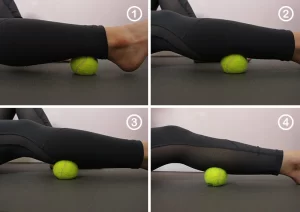
Hip flexor release
- Place a 5-inch massage ball just below your hip bone while you are on your stomach.
- Put as much weight as is manageable on the ball.
- As much as you can bear, swing your leg side to side while bending the knee on the release side to a 90-degree angle.
- Afterward, come back to your neutral spot.
- Then unwind.
- Do this exercise a few times over.
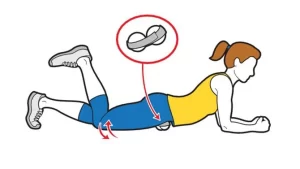
Inner thighs squat
- Maintaining the weight on your heels, place your feet shoulder-width apart and point your toes out at a 45-degree angle.
- Bring your hips back as you start to squat, as though you’re attempting to sit in a chair that’s too far behind you.
- Squat with your knees out to the sides, lowering yourself as far as possible (no more than a 90-degree angle), then push back up through your heels.
- Then return to your neutral position.
- Next, relax.
- Repeat this exercise several times.

IT band release
- Position a foam roller beneath your lower leg, midway between your hip and knee, while lying on the side you wish to release.
- From the top of the knee to the base of the hip, move your leg up and down over the foam roller.
- As much as you can bear, try to massage the more sensitive areas.
- Then return to your neutral position.
- Next, relax.
- Repeat this exercise several times.

Clamshell
- Beginning by lying comfortably on your side on the table.
- Clench your abdomen.
- Now flex your knees.
- Establishing both feet jointly increases your upper knee.
- Hold on for a brief while.
- Then lower your leg gradually.
- Return to your neutral posture after that.
- Next, unwind.
- Repeat this exercise several times.
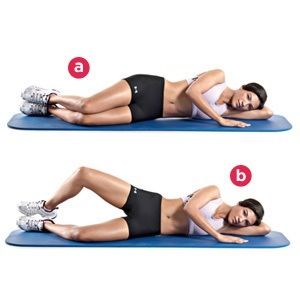
Steps with Banded Foot sides
- Wrap a resistance band around your ankles or feet.
- The exercise gets harder the lower the band.
- Place your feet hip-width apart as you stand.
- To put yourself in a quarter squat or something similar, slightly bend your knees and hinge forward at the hips.
- Maintain a straight back, an erect chest, and an active core.
- Throughout the exercise, maintain your trunk upright and avoid slanting to one side.
- Step right with your right foot and then left to continue the movement.
- Ensure you keep your tension throughout the exercise and the band remains tense.
- Return to your neutral posture after that.
- Next, unwind.
- Repeat this exercise several times.
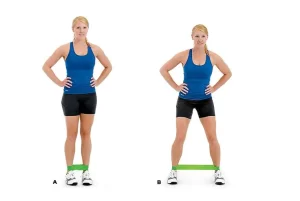
Essential is Prevention:
It is best to take care of your knees and steer clear of the question of why they are popping in the first place before they become noisy. Frequent exercise can improve your knees and is a great way to become healthier overall.
Strengthen the muscles that cooperate with your knees to provide them with the support they require. Before beginning any kind of exercise, always warm up. Before beginning your main routine, you’ll wake up your muscles and get the blood flowing. Additionally, it lubricates all of your joints, including your knees.
Tips for healthy knees:
- Before you exercise, warm up.
- A hard workout combined with cold joints and muscles might be harmful.
- Remain flexible.
- Regular exercise might aid in strengthening the knee muscles.
- At least twice a week, work out with weights or resistance bands. You can also perform bodyweight exercises like lunges and squats.
- Build muscle to support your knees by riding a stationary bicycle, walking up hills, or both.
- Maintaining a moderate weight can also assist in preventing stress on the knee joints through regular exercise.
- Learn which workouts to try and which to avoid.
- Stretching regularly can also help warm up the knee muscles, lowering the risk of injury and increasing flexibility.
- Try dynamic stretches, which include moving a muscle through its whole range of motion, before working out.
- Perform static stretches, which involve holding a stretch for 30 seconds, after working out. This lessens the chance of harm.
- Stretch your hamstrings and quadriceps, the muscles in front and back of your thigh, regularly.
- If you already work out, gradually increase the intensity and duration of your workouts.
- Put on appropriately fitting and well-maintained shoes.
- Continue to eat healthfully. Your knees will experience less stress.
Summary
Many people experience hearing and feeling their knees pop. Snapping or cracking of the knee can be completely harmless or a common effect of aging joints. It might also indicate that there is pain or a reduction in joint movement in addition to the sound.
Among the painful causes of knee crepitus include torn meniscus, knee osteoarthritis, tendinitis in the knee, and patellofemoral stress syndrome (runner’s knee). A quick pop in the knee is regarded as an acute injury since it occurs without much to no warning.
A person may need healthcare if they experience discomfort or edema in addition to the popping sound. Although the precise reason for knee popping is frequently unknown to medical professionals, meniscus or ligament injuries are usually to blame. In severe circumstances, a person benefits from medication, surgery, and rehabilitation.
Maintaining a healthy weight, eating well, and exercising can all help to keep your knee joints strong and avoid further issues. If you have osteoarthritis, they can also help you control your symptoms and lessen the damage to your knees.
FAQs
The popping sound and knee discomfort will usually go away, but it will take some time to do so depending on what is causing it. Usually, soft tissue injuries heal in six to twelve weeks. Most people finish their knee-strengthening workouts in less than three months. As there isn’t a mechanical issue that has to be corrected, the popping noises may persist if there is no discomfort associated with them. But don’t worry, there isn’t a higher chance of knee issues in later life.
Knee popping is usually just bubbles of tiny, bony lumps and is not a severe issue. However, if there is an abrupt popping sound coming from the knee at the scene of the accident, it usually means that one of the knee ligaments has been seriously injured. In this case, knee popping could be rather dangerous.
A common complaint is that when they crouch down, there are popping, cracking, or crunching sounds. The technical word for “joint noise” is called crepitus or cavitation. Carbon dioxide gas bubbles occur inside joints due to variations in pressure, and when these bubbles burst, your knee will make that sound you’re familiar with.
When a person with knee crepitus bends and straightens their knee, they may typically feel the crunching or cracking feeling by placing their hand over the knee cap.
These circumstances are likely to result in this injury;
Participating in fast-paced sports: Sports with quick turns, pauses and starts frequently cause knee problems.
Lifting large objects: If adequate lifting technique is not employed, this might cause additional strain on the knee joint.
No.
That kind of sound is not indicative of a broken bone. A rip in one of the four major ligaments supporting the knee, or a rip in the protecting cartilage on either side of the knee, can produce a loud “pop” and instant agony.
Not every time.
Certain ligament and/or cartilage injuries are so severe that they may never fully heal and necessitate surgery as well as a protracted recovery time. Less serious injuries, particularly in those under 40, can be managed with physical therapy and supportive care, allowing you to finally resume your prior activities.
While it is true that playing sports is the main cause of a painful snap in the knee, light exercise like lifting boxes or climbing stairs can occasionally sprain a ligament or break a piece of cartilage. Older adults are typically affected by this, particularly those who are overweight or in otherwise poor physical shape.
A sprain occurs when a ligament—tough “cords” that keep bones together—is overstretched. While a sprain will heal with rest and soreness, a pop followed by sudden, intense pain indicates that the ligament or a cartilage fragment has actually been ripped or shattered Thus, the pop suggests a more severe injury.
You can feel as though something in your knee is constantly grabbing on another area in addition to hearing a popping sound. Swelling and soreness could accompany this feeling, and your knee can feel locked, unusually loose, or immovable.
One of the two pieces of cartilage that are wedged between your thighbone and shinbone may rip in response to an abrupt pivot or rotation or direct pressure. This type of injury, called a meniscus tear, may produce a popping sound. There may be pain, edema, stiffness in the joints, and a feeling of unsteadiness thereafter.
Frequently, the sound is just the result of air or gas bubbles forming in the fluid around the joints and popping, which is represented by the cracking. In some cases, knee crepitus may be a sign of mild to early osteoarthritis.
You might be able to walk again if your displaced patella realigns itself. However, the damage will still cause the knee to swell and hurt. Walking should not be attempted if it is too painful. In any case, schedule a visit with your doctor to rule out any further injuries.
When knee popping isn’t followed by discomfort or swelling, it’s usually safe. The knee’s structural makeup often causes the sound and sensation.
For this ailment, “RICE”—rest, ice, compression, and elevation—is the first line of treatment. It can also be relieved by physical therapy exercises and anti-inflammatory medications. Splinting, surgery, or both can be required if these don’t work. They might facilitate some knee realignment.
Your knees won’t move sideways as you move if the muscles in your legs and butt (glutes) are strengthened. Stay adaptable. Since stretching expands the muscles and tissues surrounding the joint, it can help prevent some popping. You should also perform a vigorous warm-up before exercising.
Engage in regular exercise to develop stronger muscles.
Low-impact exercises have been to help initiate a chemical reaction in the joints and lessen osteoarthritis symptoms.
Thigh contraction: three sets of fifteen seconds per leg.
Leg raises that are straight: three sets of ten repetitions per leg.
Three sets of 15 seconds each leg for hamstring stretches combined with thigh contractions.
Physical Rehabilitation/Workouts
Physical therapy is another nonsurgical treatment option for knee pain. Some of the best exercises to keep your cartilage healthy and strengthen the muscles surrounding your knees and legs are weight-bearing activities like biking, walking, and using an elliptical machine.
Physical therapy for knee popping and pain management.
medication that is nonsteroidal anti-inflammatory.
Exercises can be modified to reduce knee strain.
knee replacement surgery in certain cases.
However, “doing exercises on your own is very appropriate” if you’re just annoyed by the noise and are not experiencing any pain, swelling, catching, or locking. In those cases, visiting a doctor is advised.
Steps with Banded Foot sides
Calf release
IT band release
Sadly, the meniscus cannot mend itself due to a lack of blood supply; nonetheless, not all patients require surgery. Nonsurgical interventions like anti-inflammatory drugs and physical therapy rehabilitation can help lessen discomfort, strengthen the knee, and regain full range of motion.
Actions you can take to aid in your recuperation
Take an ibuprofen or paracetamol to help with the pain.
To lessen swelling, when you’re at rest, elevate and support your lower leg and knee slightly.
To prevent your knee from becoming stiff, do knee exercises all throughout the day.
keep yourself as busy as you can
Dehydration and insufficient amounts of calcium and vitamin D can also cause cracks in the knees and other joints. For collagen to form and lubricate the area around our joints, our bodies require moisture. The way out is to take a lot of calcium citrate and vitamin D together. And never forget to drink plenty of water to stay hydrated.
Place a pillow beneath the leg to provide comfort and ease any pain or swelling so they can fall asleep. It’s not enough to merely place padding under the knee. It’s important to keep the knee straight during recovery, so place an additional cushion directly below the ankle.
References:
- Geng, C. June 28, 2022. Know this about popping knees and discomfort. This is an overview of the article “Knee Popping and Pain.” Citation inside the text: (Geng, 2022)
- Larson, J. (May 10, 2021). What Could Also Cause Pain in Your Knee Along with a Loud Pop? A loud pop in the knee followed by pain is described in Healthline.Citation inside the text:(Larson, 2021)
- Cluett, J. (May 10, 2023). Reasons for Knee Snapping or Popping. Verywell Medical. Popping and snapping (2549494): https://www.verywellhealth.com Citation within the text: (Cluett, 2023)
- Hill, L. O. (March 6, 2014). What Does Your Knee Want You to Know? WebMD. Knee cracks and pops: https://www.webmd.com/pain-management/knee-pain/features Citation inside the text: Hill (2014)
- Wilson, C. September 16, 2020. popping and soreness in the knees. causes of knee popping and how to treat them. Over at Knee-Pain-Explained.com. https://www.explainedkneepain.com/popping-kneepain.html In-text Reference: Wilson (2020)
- Case, A. June 19, 2023. My Knee Is Popping—Why? Services for Integrated Rehabilitation. Why are my knees popping? https://integrehab.com/blog/knee-pain/19 Reference inside text: (Case, 2023)
- Crepitus: Bone Cracking and Joint Popping | Aurora Health Care, n.d. Aurora Medical Services.www.aurorahealthcare.org/services/orthopedics/diseases/crepitus In-text Citation: (Aurora Health Care, n.d.) Bone Cracking and Joint Popping (Crepitus)
- Campbell, T. July 8, 2022. The Chiropractic Clinic | Naperville and Geneva, IL explains what knee popping during exercise is and how to treat it. Victory Rehab is a chiropractic clinic located in Naperville and Geneva, IL. Knee popping during workouts: https://www.victoryrehab.com/sports-injuriesWhat is it and what should I do? Reference within the text: Campbell (2022)
- Exercises, Miller, K. (November 2, 2021). Physical therapists recommend the following six exercises if you have cracking and popping in your knees. Exercises for cracking knees: Prevention. https://www.prevention.com/fitness/a20455297 Citation within the text: Miller (2021)
- Exercises, Stretch Your Calf. (n.d.). Why Do My Knees Crack? Hingehealth. https://www.hingehealth.com/resources/articles Reference within the text: (Calf Stretch, n.d.)
- Image 2, B. A. Oglethorpe (2015), October 22. Top Stretches. Oprah.com. best-stretches/all at https://www.oprah.com/health_wellness Citation inside the text: (Oglethorpe, 2015)
- Image 3, H., & W. Black (2023, December 15). The Complete Workout Manual for Sculpting the Inner Thighs. Welltech. “The Ultimate Exercise Guide for Building the Inner Thighs.” Welltech.com. Reference inside text: (Black, 2023)
- Image 6, lateral step from side to side. (n.d.). The Trainer in Humanity. Resistance band exercises to help strengthen your knees can be found at https://www.thehumantrainer.com/bfa4433d5a2ac015f42677b15d7aaeff/Reference inside text: Side to Side Lateral Step (n.d.)

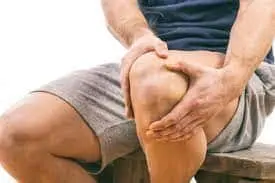


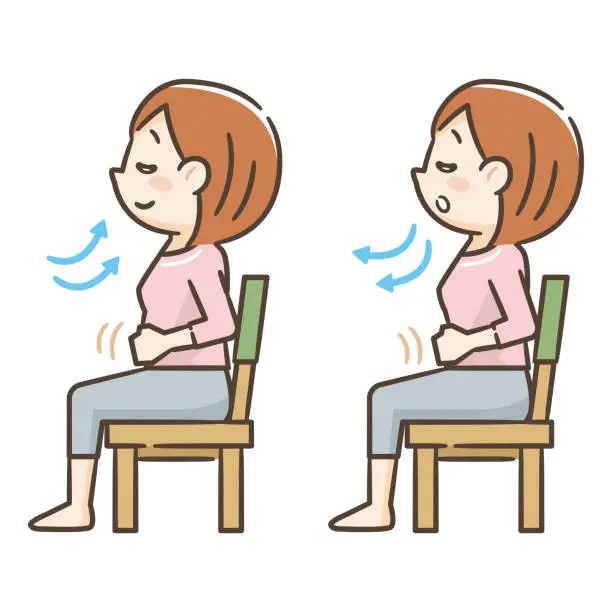
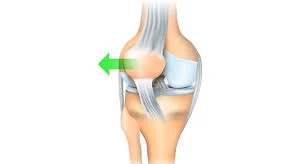
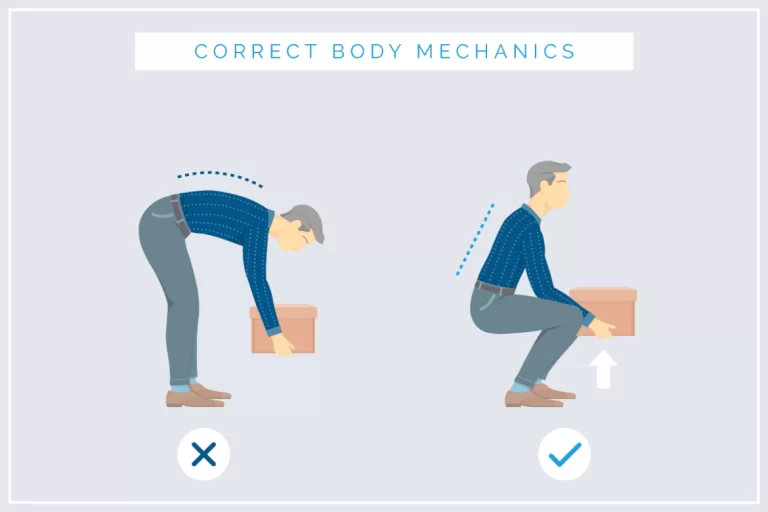
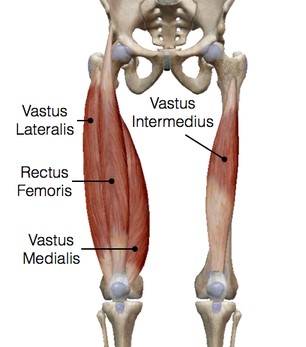
4 Comments